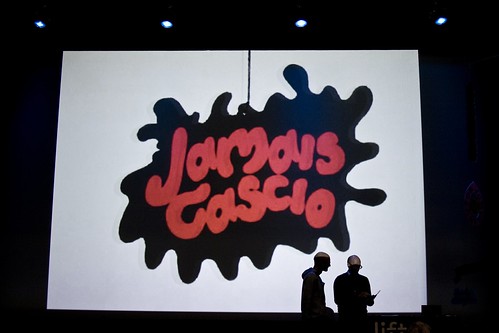(This is the original Ethical Futurism piece I wrote for Futurismic in 2006; I intend to update and build on it, but I wanted to make sure the original could be found in its entirety here.)
What does it mean to be an “ethical futurist?”
I don’t mean just the basics of being an ethical human being, or even the particular ethical guidelines one might see for any kind of professional — disclosure of conflicts of interest, for example, or honesty in transactions. I mean the ethical conventions that would be essentially unique to futurists. What kinds of rules should apply to those of us who make a living (or a life’s goal) out of thinking about what may come?
Futurists — including scenario planners, trend-spotters, foresight specialists, paradigm engineers, and the myriad other labels we use — have something of an odd professional role. We are akin to reporters, but we’re reporters of events that have not yet happened — and may not happen. We are analysts, but analysts of possibilities, not histories. We’re science fiction storytellers, but the stories we tell are less for entertainment than for enlightenment. And, much to our surprise, we may be much more influential than we expect.
It’s not that no futurists have considered ethical issues before. Foresight professionals regularly grapple with the question of what kinds of ethical guidelines should govern futurism, in mailing lists, organizational debates, and academic papers. But — to my surprise — neither of the two main professional organizations for futurists, the World Future Society and the Association of Professional Futurists, have any lists, documents or debates on the subject available to the public. This doesn’t mean that futurists are inclined to behave unethically or amorally, but simply that there seems to be no overarching set of principles for the field, at least none open to the broader community in which futurists act.
As I gave this some thought, it struck me that futurists are not alone in thinking about tomorrow professionally. Most business consultant types also concern themselves with what may come, with the results of corporate decisions and organizational choices. But the difference between that sort of business consulting and foresight consulting comes down to the difference between outcomes and consequences. Outcomes are the (immediate or longer-term) results of actions; consequences are how those actions connect to the choices and actions of others, and to the larger context of society, the environment, and the future itself.
As I see it, then, where business professionals are responsible to the client and their various stakeholders, foresight professionals are responsible to the future.
Here’s what I think that means:
It means that the first duty of an ethical futurist is to act in the interests of the stakeholders yet to come — those who would suffer harm in the future from choices made in the present. This harm could come (in my view) in the form of fewer options or possibilities for development, less ecological diversity and environmental stability, and greater risks to the health and well-being of people and other species on the planet. Futurists, as those people who have chosen to become navigators for society — responsible for watching the path ahead — have a particular responsibility for safeguard that path, and to ensure that the people making strategic choices about actions and policies have the opportunity to do so wisely.
From this, I would argue for the following set of ethical guidelines:
An ethical futurist has a responsibility not to let the desires of a client (or audience, or collaborator) for a particular outcome blind him or her to the consequences of that goal, and will always informs the client of both the risks and rewards.
An ethical futurist has the responsibility to understand, as fully as possible, the range of issues and systems connected to the question under consideration, to avoid missing critical potential consequences.
An ethical futurist has the responsibility to acknowledge and make her or his client (audience, collaborators) cognizant of the uncertainty of forecasts, and to explain why some outcomes and consequences are more or less likely than others.
An ethical futurist has the responsibility to offer unbiased analysis, based on an honest appraisal of sources, with as much transparency of process as possible.
An ethical futurist has the responsibility to recognize the difference between short-term results and long-term processes, and to always keep an eye on the more distant possibilities.
Futurists perform a quirky, but necessary, task in modern society: we function as the long-range scanners for a species evolved to pay close attention to short-range horizons. Some neurophysiologists argue that this comes from the simple act of throwing an object to hit a moving target. Chimpanzees and bonobos, even with DNA 98% identical to our own, are simply unable to do so, while most humans can (at least with a bit of experience). It turns out that the same cognitive structures that let us understand where a moving target will be may also help us recognize the broader relationship between action and result — or, more simply, how “if” becomes “then.”
I’m not sure how many futurists recognize the weight of responsibility that rests on their shoulders; this is an occupation in which attention-deficit disorder is something of a professional requirement. But when we do our jobs well, we can play a pretty damn important role in shaping the course of human history. It’s incumbent upon us, then, to do our jobs with a sense of purpose and ethics.




